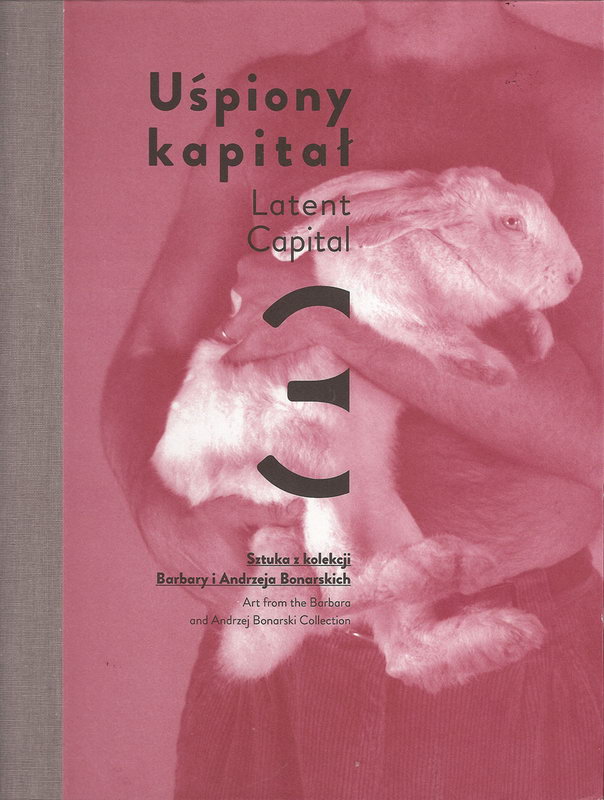
Order by e-mail: profile@fundacjaprofile.pl
Joseph Beuys, Jan Chwałczyk, Tomasz Ciecierski, Zbigniew Maciej Dowgiałło, Katarzyna Górna, Ryszard Grzyb, Bożena Grzyb-Jarodzka, Władysław Hasior, Paweł Jarodzki, Marek Kijewski, Grzegorz Klaman, Paweł Kowalewski, Katarzyna Kozyra, Mariusz Kruk, Jacek Kryszkowski, Natalia LL, Jurij Lejderman, Łódź Kaliska, Eustachy Kossakowski, Zofia Kulik, Ewa Kuryluk, Piotr Młodożeniec, Jarosław Modzelewski, Agnieszka Niziurska-Sobczyk, Włodzimierz Pawlak, Tomasz Psuja, Zbigniew Reszka, Tadeusz Rolke, Tomasz Sikorski, Marek Sobczyk, Joanna Stańko, Henryk Stażewski, Paweł Susid, Wojciech Tracewski, Jerzy Truszkowski, Małgorzata Turewicz, Waldemar Umiastowski, Szymon Urbański, Anastazy B. Wiśniewski, Ryszard Woźniak, Włodzimierz Jan Zakrzewski
The catalogue of art from the Barbara and Andrzej Bonarski collection is the third instalment in a series, carried out by the Profile Foundation and the Wilanów Palace Museum under the name Latent Capital, devoted to presenting the most significant private collections of contemporary and modern art. This year’s presentation shows a contemporary art collection that was largely created „on a daily basis,” in response to art being currently made. In Polish culture, poor in great collecting traditions, this was an extraordinary situation, resulting to a large extent from a fascination with contemporary art, but also from Andrzej Bonarski’s role in its promotion, his unprecedented activity as an active animator of the then art scene.
The exhibited collection is a unique collection of Polish art of the 1980s, a comprehensive selection of paintings and examples of sculptures classified as „New Expression,” with iconic works by artists such as Jarosław Modzelewski, Włodzimierz Pawlak or Marek Sobczyk. A one-of-a-kind collection reflecting the dynamics of late-People’s Poland-era artistic culture, when new forms of art were emerging. Among the period’s major artistic manifestations, distancing themselves as firmly from state sponsorship as from the Church-affiliated opposition, were the exhibitions organized by Andrzej Bonarski – famous group shows, such as the crucial 1980s event, What’s Up (1987), and a long series of solo presentations of New Expression painters. A collection of works from those shows offers an insight into the art of a decade when social changes went hand in hand with artistic revaluations and a new generation of artists, rejecting the rhetorics of both the communist government and the underground opposition, worked out new idioms of art, often stylistically exuberant, full of humour and irony, disproportionately vivid in the otherwise dull reality and, sometimes, nonsensically absurd in their exotic references. This exhibition offers a chance to examine the „colourful”, first exciting then forgotten, decade, while films documenting most of the twenty two exhibitions organized by Bonarski between 1986 and 1991 allow viewing the presented works in the context of the developments on the then artistic scene.
The catalogue features also a selection from a later part of the collection, to which in the following decades were added significant works by leading feminist critical artists such as, Zofia Kulik, Natalia LL, Katarzyna Kozyra or Katarzyna Górna. One of the highlights in this part of the collection, which oscillates between various themes and figures of contemporary art, are the works of Władysław Hasior, whom Bonarski made one of the main protagonists of his last show, Polish Chic, at the Zachęta in Warsaw in 1991. The collection’s previously unknown theme is a selection of works by Henryk Stażewski, including a series of self-portraits and, above all, previously unpublished sketches by the nestor of the Polish avant-garde.
According to the intention of the Latent Capital series, the exhibition from the Barbara and Andrzej Bonarski collection presents works that differentiate or complement the picture of art familiar from museum and public collections. The programmatic character of the part of the collection devoted to 1980s art makes it a major reference in the debate on the artistic culture of the recently „revived” decade.
Exhibition curator: Bożena Czubak
Curators of the Latent Capital cycle: Bożena Czubak, Andrzej Paruzel
Cooperation: Andrzej Grabowski
